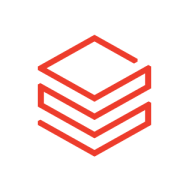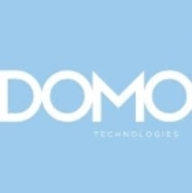


Find out what your peers are saying about Alteryx, SAP, Altair and others in Predictive Analytics.
Alteryx helps familiarize managers with artificial intelligence-driven possibilities.
For a lot of different tasks, including machine learning, it is a nice solution.
When it comes to big data processing, I prefer Databricks over other solutions.
I contacted customer support once or twice, and they were quick to respond.
The customer service was not good because we weren't premium support users.
Customer support is good since I've had no issues and can easily contact representatives who respond promptly.
Whenever we reach out, they respond promptly.
As of now, we are raising issues and they are providing solutions without any problems.
I rate the technical support as fine because they have levels of technical support available, especially partners who get really good support from Databricks on new features.
They were quite professional and in around three to five working days, they had identified where they suspected there was an issue and I was able to fix it.
It's very easy to get technical support from Domo.
While they eventually provide the correct answers, their support for smaller customers could be improved.
Alteryx is scalable, and I would give it eight out of ten.
The patches have sometimes caused issues leading to our jobs being paused for about six hours.
Databricks is an easily scalable platform.
I would rate the scalability of this solution as very high, about nine out of ten.
The fact that you're able to easily identify the pipelines or flows that have errors, and it notifies you when you're building a pipeline where you can run previews and tell where to fix issues, is helpful.
Sigma, which is written for Snowflake, scales more easily than Domo.
The response time is longer than desired, but sometimes they provide the correct solution while other times they don't provide the needed scenarios.
I didn't need to reach out to Alteryx for support because available documents usually provide enough information to resolve issues.
I have not encountered any lagging, crashing, or instability in the system during these three months of usage.
They release patches that sometimes break our code.
Although it is too early to definitively state the platform's stability, we have not encountered any issues so far.
Databricks is definitely a very stable product and reliable.
In recent years, I haven't had such cases. It's quite stable and I don't have any reservations on its stability.
In terms of overall stability of the platform, it's very stable.
The setup of Domo is challenging as the cache and serialization part still causes errors; since it's fully cloud-based, they need to improve the connectivity part.
The tool could include more native connectors, such as for global ERPs, instead of requiring additional fees for these connections.
The support structure changed; initially, we received great support, however, it later became less reliable due to licensing issues and a tiered support system.
The additional features that Alteryx needs to work on to make it more competitive include better collaboration and easier integration through API.
Adjusting features like worker nodes and node utilization during cluster creation could mitigate these failures.
We prefer using a small to mid-sized cluster for many jobs to keep costs low, but this sometimes doesn't support our operations properly.
We use MLflow for managing MLOps, however, further improvement would be beneficial, especially for large language models and related tools.
End users require a license to run their own reports and dashboards, which are fairly expensive.
Some technical aspects such as Beast Mode calculation could be improved in Domo, as it would provide more clarity and help in giving insights to clients or customer business team requirements.
One of the areas where we've had frustrations with Domo is the aesthetics. The aesthetics are quite limited compared to other BI tools such as Tableau and Power BI.
Alteryx is more cost-effective compared to Informatica licenses, offering savings.
It has a fair price when considering a larger-scale implementation.
Alteryx is expensive.
It is not a cheap solution.
Domo's pricing is high compared to other BI tools, and it is costly.
For long-time users, it can become expensive, but the trade-off is access to the entire platform instead of licensing different components separately.
Domo is expensive compared to other solutions.
Alteryx not only represents data but also supports decision-making by suggesting the next steps.
Analysts who do not have any coding experience can still work on the transformation and preparation of data, which is quite useful.
Alteryx is user-friendly and allows easy creation of workflows compared to Informatica PowerCenter.
Databricks' capability to process data in parallel enhances data processing speed.
The platform allows us to leverage cloud advantages effectively, enhancing our AI and ML projects.
The Unity Catalog is for data governance, and the Delta Lake is to build the lakehouse.
App Studio is valuable because it allows all the customization we needed; we can decode it, with the view and grid which are all I need, drill-downs, and everything can be done the way I need it.
I have been using it for four years and have been able to extract the information I need from it.
The most valuable feature of Domo is the fact that you can connect multiple inputs and you don't have to have a data warehouse.
| Product | Market Share (%) |
|---|---|
| Alteryx | 14.0% |
| Anaplan | 13.8% |
| SAP Analytics Cloud | 12.7% |
| Other | 59.5% |
| Product | Market Share (%) |
|---|---|
| Databricks | 8.3% |
| Snowflake | 17.7% |
| Dremio | 8.9% |
| Other | 65.1% |
| Product | Market Share (%) |
|---|---|
| Domo | 3.9% |
| Microsoft Power BI | 14.1% |
| Tableau Enterprise | 10.3% |
| Other | 71.7% |



| Company Size | Count |
|---|---|
| Small Business | 31 |
| Midsize Enterprise | 15 |
| Large Enterprise | 51 |
| Company Size | Count |
|---|---|
| Small Business | 25 |
| Midsize Enterprise | 12 |
| Large Enterprise | 56 |
| Company Size | Count |
|---|---|
| Small Business | 14 |
| Midsize Enterprise | 11 |
| Large Enterprise | 19 |
Alteryx can be used to speed up or automate your business processes and enables geospatial and predictive solutions. Its platform helps organizations answer business questions quickly and efficiently, and can be used as a major building block in a digital transformation or automation initiative. With Alteryx, you can build processes in a more efficient, repeatable, and less error-prone way. Unlike other tools, Alteryx is easy to use without an IT background. The platform is very robust and can be used in virtually any industry or functional area.
With Alteryx You Can:
Alteryx Features Include:
Some of the most valuable Alteryx features include:
Scalability, stability, flexibility, fast performance, no-code analytics, data processing, business logic wrapping, scheduling, ease of use, data blending from different platforms, geo-referencing, good customization capabilities, drag and drop functionality, intuitive user interface, connectors, machine learning, macros, simple GUI, integration with Python, good data transformation, good documentation, multiple database merging, and easy deployment.
Alteryx Can Be Used For:
Alteryx Benefits
Some of the benefits of using Alteryx include
:
Reviews from Real Users
"Automation is the most valuable aspect for us. The ability to wrap business logic around the data is very helpful." - Theresa M., Senior Capacity Planner at a financial services firm
"Alteryx has made us more agile and increased the speed and effectiveness of decision making." - Richard F., Director, Digital Experience & Media at Qdoba Restaurant Corporation
"The scheduling feature for the automation is excellent." - Data Analytics Engineer at a tech services company
"The product is very stable and super fast, five-star. It's significantly more stable than its nearest competitor." - Director at a non-tech company
“A complete solution with very good user experience and a nice user interface.” - Solutions Consultant at a tech services company
"There are a lot of good customization capabilities." - Advance Analytics PO at a pharma/biotech company
Databricks is utilized for advanced analytics, big data processing, machine learning models, ETL operations, data engineering, streaming analytics, and integrating multiple data sources.
Organizations leverage Databricks for predictive analysis, data pipelines, data science, and unifying data architectures. It is also used for consulting projects, financial reporting, and creating APIs. Industries like insurance, retail, manufacturing, and pharmaceuticals use Databricks for data management and analytics due to its user-friendly interface, built-in machine learning libraries, support for multiple programming languages, scalability, and fast processing.
What are the key features of Databricks?
What are the benefits or ROI to look for in Databricks reviews?
Databricks is implemented in insurance for risk analysis and claims processing; in retail for customer analytics and inventory management; in manufacturing for predictive maintenance and supply chain optimization; and in pharmaceuticals for drug discovery and patient data analysis. Users value its scalability, machine learning support, collaboration tools, and Delta Lake performance but seek improvements in visualization, pricing, and integration with BI tools.
Domo is a cloud-based, mobile-first BI platform that helps companies drive more value from their data by helping organizations better integrate, interpret and use data to drive timely decision making and action across the business. The Domo platform enhances existing data warehouse and BI tools and allows users to build custom apps, automate data pipelines, and make data science accessible for anyone through automated insights that can be shared with internal or external stakeholders.
Find more information on The Business Cloud Here.